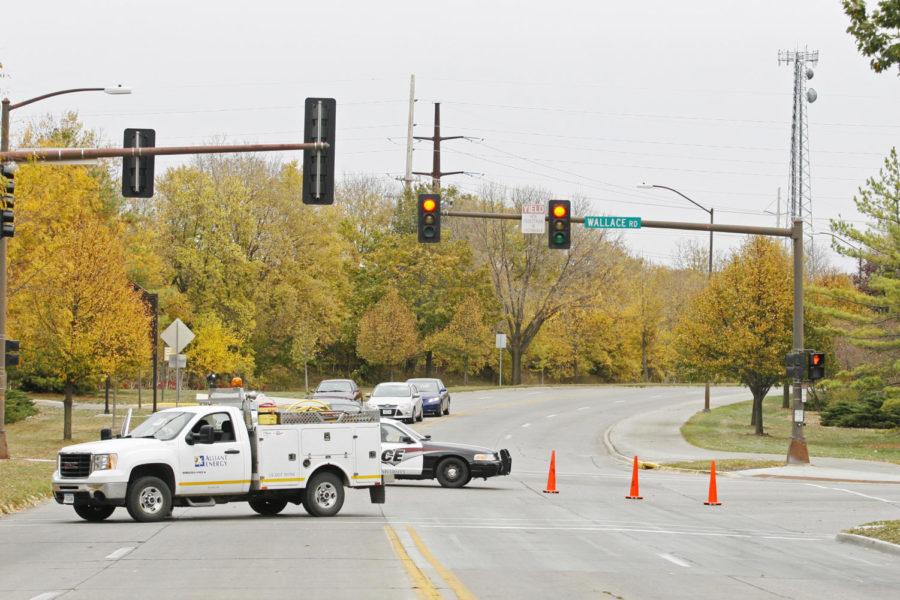Natural gas leak on campus closes Pammel Drive
October 5, 2012
Updated at 4:56 p.m.
Officials believe a malfunctioning regulator was likely the cause of a natural gas leak that occurred late Friday afternoon near the corner of Wallace and Stange Avenues.
Justin Foss, spokesperson for Alliant Energy, says that the device is responsible for regulating pressure when gas is entering a closed system from the Alliant Energy gas line.
The release was reported to the department of public safety at 2:15 p.m. Friday afternoon. Officials were able to close the leak at 3:23 p.m. According to Foss, there is not really a way to measure how much gas was released during that time.
“If the regulator fails like that, it’s meant to release the gas into the atmosphere.” This prevents any further disruption or harm from the drastic pressure change, Foss said. When the gas is discharged from the pipes it mixes with the oxygen in the air and in doing so makes combustion practically impossible.
Foss also said that this type of incident is not unheard of of. “You can think of it like the steering-fluid pump going out on a car; sometimes it just needs to be replaced.”
The station where the leak occurred serves just one building on campus, Foss said
The university’s gas system is one big loop, set up such that if a major regulator goes down, the other can pick up the slack said Jim Gunning, program manger for Environmental Health and Safety. In his twenty-five years on the job though, he said he couldn’t remember anything like that ever happening on campus.
Natural gas is naturally odor free, but for safety reasons an odorant is added so that when leaks like this happen people are aware, said Gunning.
According to officials from the Story County Medical Center, low level exposure to natural gas can cause dizziness, headaches, and shortness of breath. Low level exposure can be cleared by simply leaving an area and getting fresh air.
Higher levels of exposure, like the kinds found in closed spaces, can result in the gas molecules flooding the blood system ending in asphyxiation. The cure for high level exposure requires a hyperbaric chamber.

















